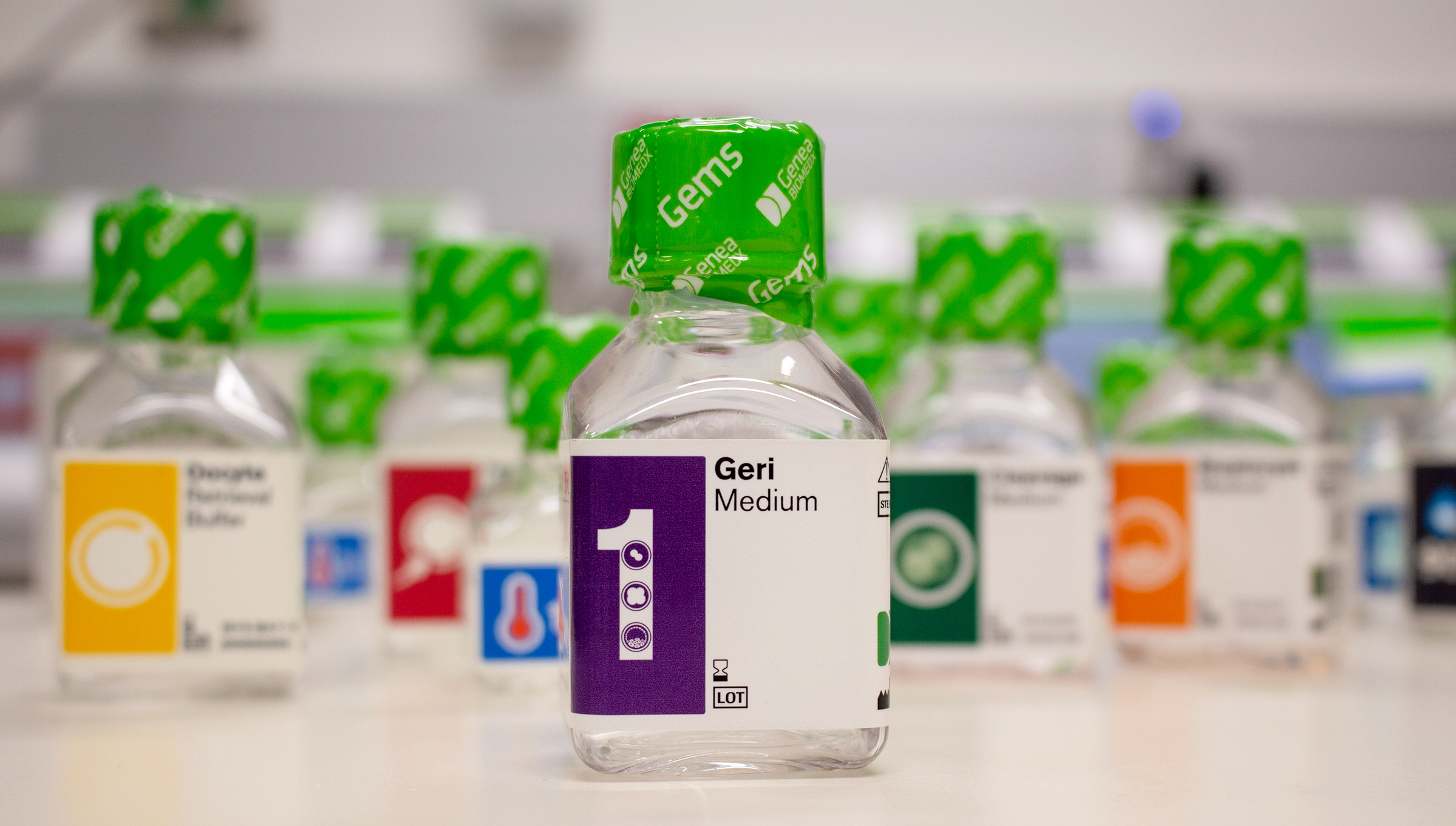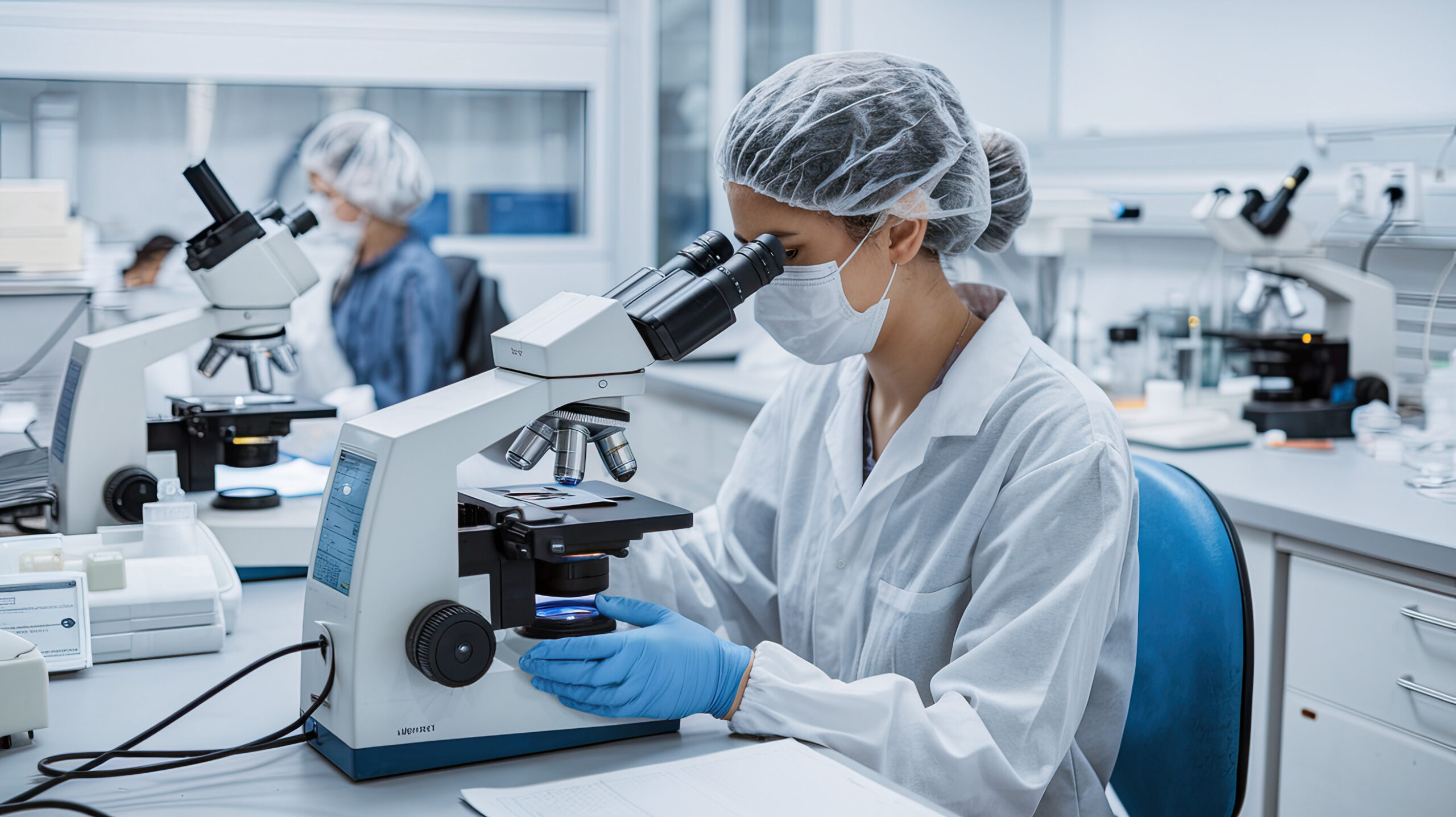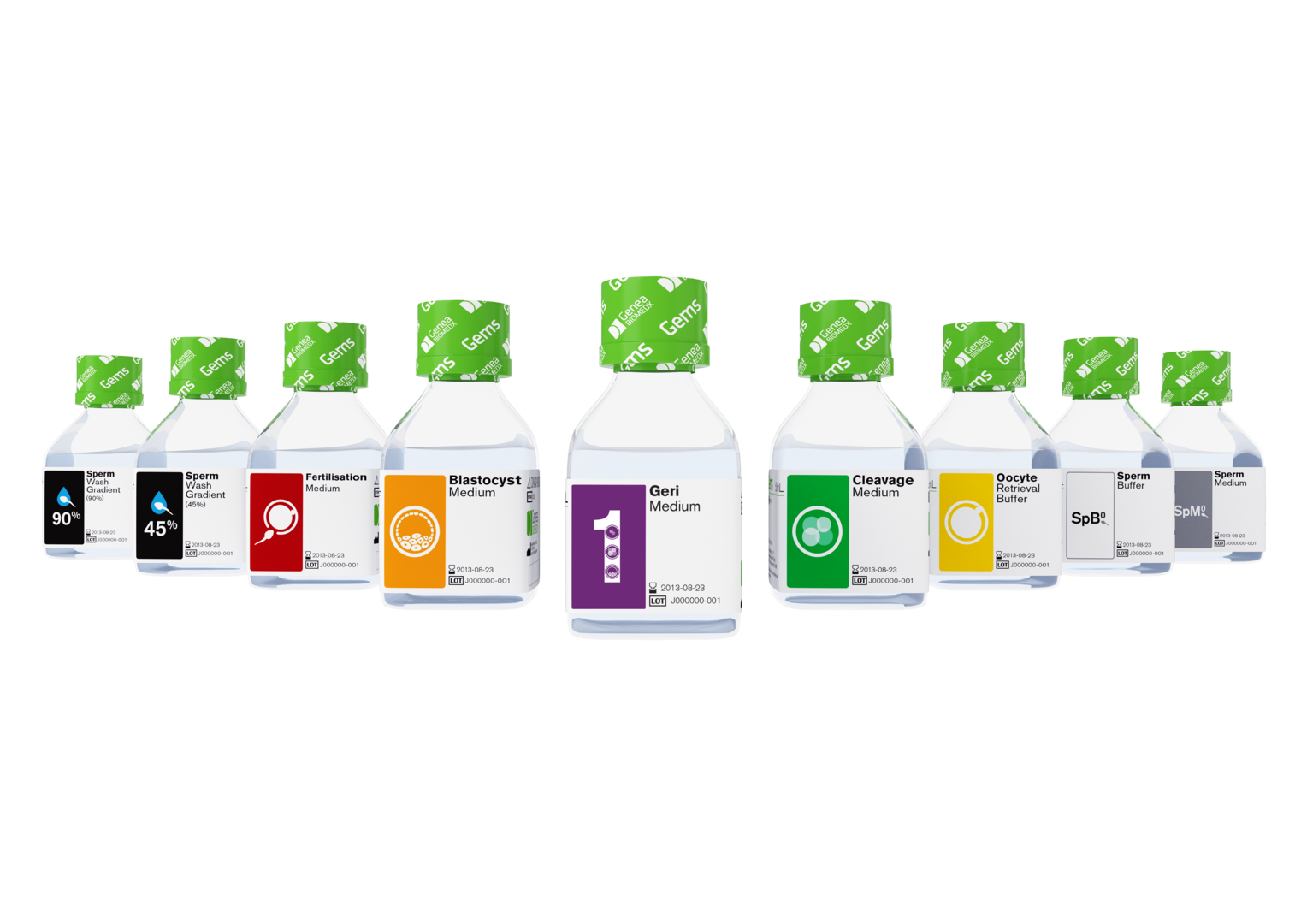In vitro fertilisation (IVF) has revolutionised reproductive medicine, offering hope to countless individuals facing infertility. A crucial component of IVF success is the embryo culture system—the environment in which embryos develop outside the body before transfer—including the culture media. The choice of culture media can significantly impact embryo viability and, ultimately, treatment outcomes.
What is Culture Media?
Embryo culture media is a specially formulated aqueous solution designed to support the growth and early development of embryos in the laboratory during IVF procedures until they are ready to be transferred to the uterus. It mimics the natural conditions of the female reproductive tract by providing essential nutrients, energy sources, and an optimal balance of pH and osmolality to sustain embryo viability.
Culture media typically contain:
- – Carbohydrates (e.g. glucose, lactate, pyruvate) to provide energy.
- – Amino acids to support protein synthesis and cell function.
- – A pH buffer to regulate the acidity of the media.
- – Osmotic regulators to maintain a stable environment.
- – Other optional components, such as antioxidants to reduce oxidative stress (included in the formulation of the Gems culture media Genea Biomedx).
The Role of Culture Media in Embryo Development:
Embryo culture media serves as a surrogate environment that mimics the conditions of the female reproductive tract, providing essential nutrients, energy sources, and optimal pH and osmolality for embryo growth. Since early embryonic development is highly sensitive to external conditions, the composition of the media can influence embryo quality, implantation rates, and live birth outcomes.
Historically, culture media have evolved from simple salt solutions designed for somatic cell culture to complex formulations that support embryos from fertilisation to the blastocyst stage. Modern culture media aim to balance embryo developmental needs while minimising stress and epigenetic modifications.
Two primary approaches dominate modern IVF laboratories: sequential and one-step culture media. The choice between these approaches depends on various factors, including laboratory preferences, patient characteristics, and technological advancements.

Sequential Culture Media: Characteristics and Advantages
Sequential culture media systems use different formulations tailored to the changing needs of the embryo during its development. Typically, one type of medium supports early cleavage-stage embryos, from fertilisation until day 3, while a separate medium is used from that point onwards for blastocyst development.
Advantages of Sequential Media:
- Stage-Specific Nutrient Optimisation: Different media formulations can be optimised to match the specific metabolic needs of embryos at different stages.
- Minimised Metabolic Stress: By providing fresh media partway through development, waste accumulation is reduced
,and essential nutrients are replenished.
Challenges of Sequential Media:
- Frequent Handling: Media changes require additional handling, increasing the risk of temperature and pH fluctuations that could stress embryos.
- Increased Labour and Cost: Sequential culture protocols are more labour-intensive and require additional media products, making them more expensive than one-step systems.
- Potential for Human Error: Each media exchange introduces an opportunity for errors, contamination
,or inconsistencies in embryo culture.
One-Step Culture Media: Characteristics and Advantages
One-step culture media, also known as single-step or continuous media, are designed to support embryo development from fertilisation to the blastocyst stage without media changes. These formulations contain all necessary nutrients, amino acids, and energy sources in a stable composition and at optimised concentrations, allowing uninterrupted culture.
Advantages of One-Step Media:
Reduced Handling and Stress: Since embryos remain undisturbed in the same medium throughout development, exposure to environmental stressors, such as temperature fluctuations and pH changes, is minimised.
Stable Culture Conditions: Continuous culture provides a stable environment, which may help reduce stress-related developmental issues.
Simplification of Laboratory Workflow: Eliminating media changes simplifies protocols, reduces labour intensity, and lowers the risk of contamination or errors.
Potential for Time-Lapse Monitoring: One-step media are the perfect partner for time-lapse imaging systems, allowing non-invasive embryo assessment without the need for media exchange, providing a totally undisturbed culture.
Challenges of One-Step Media:
Accumulation of Metabolic By-Products: As embryos grow, they release waste products that can accumulate in static media, potentially affecting embryo development.

Scientific Perspectives: Which System is Better?
The debate over one-step versus sequential media remains active, with studies showing varying results depending on laboratory conditions, patient populations, and specific protocols.
Evidence Supporting Sequential Media:
Some research indicates that stage-specific culture conditions in sequential media may better mimic in vivo conditions, leading to higher-quality embryos and improved implantation rates. The ability to tailor nutrients and reduce metabolic waste accumulation can enhance embryo viability in some cases.
Evidence Supporting One-Step Media:
Other studies suggest that continuous culture in one-step media leads to comparable, if not improved, blastocyst formation rates and pregnancy outcomes compared to sequential media. The reduced handling and stable environment may benefit embryo development, particularly in automated systems using time-lapse imaging.
Clinical Considerations and Laboratory Preferences
The choice between sequential and one-step culture media often depends on:
Laboratory Workflow: Labs equipped with time-lapse incubators may favour one-step media, while traditional setups may benefit from sequential media.
Patient-Specific Factors: Some patient populations, such as those with poor embryo quality or advanced maternal age, may respond better to specific media formulations.
Cost and Resource Availability: Budget constraints and laboratory expertise can influence media selection

Conclusion: Finding the Best Approach
Both sequential and one-step culture media have their respective advantages and challenges, and there is no universally superior option, as both can successfully support embryo development to the blastocyst stage. IVF laboratories must carefully evaluate their workflows, technological capabilities, and patient needs when selecting culture media. Ongoing research and advancements in embryo culture technology will continue to refine these choices, ultimately improving IVF success rates and patient outcomes.
Given the lack of consensus on which is the better strategy, many companies offer both options in their portfolio, allowing customers to choose their preferred approach. For example, the Gems media suite by Genea Biomedx offers the Cleavage and Blastocyst Media for a sequential strategy and Geri Medium for continuous culture—specifically designed to be the perfect partner for the Geri incubator with an integrated embryo monitoring system.
Regardless of the approach, optimising embryo culture conditions remains a cornerstone of IVF success, helping more families achieve their dreams of parenthood.
